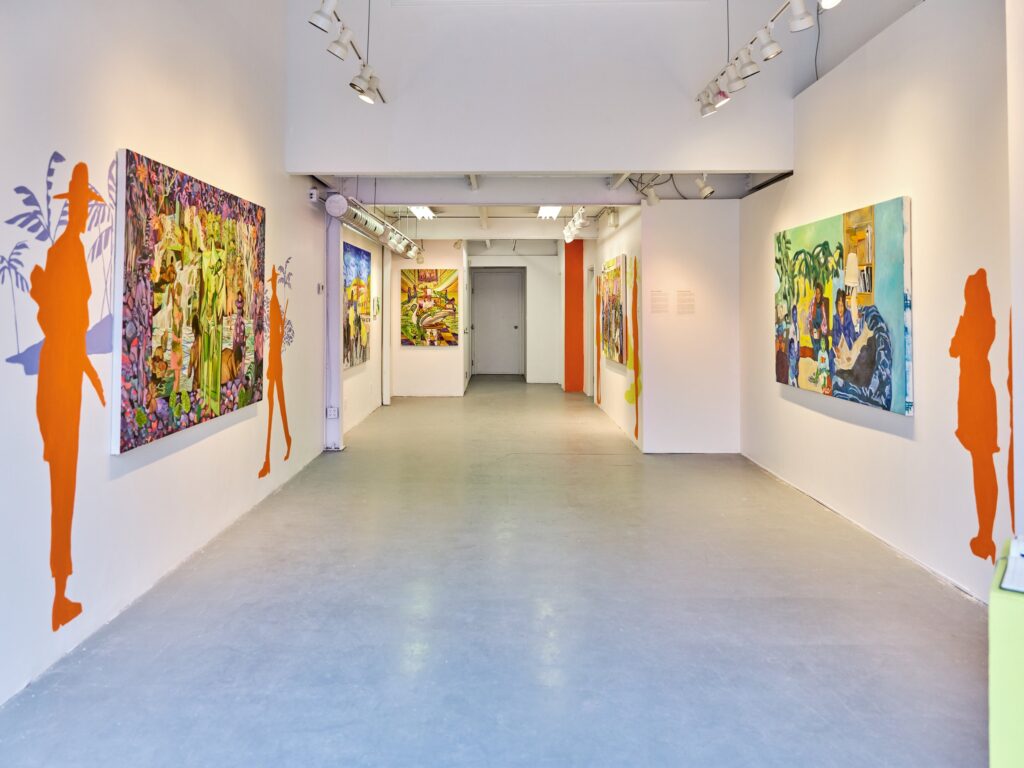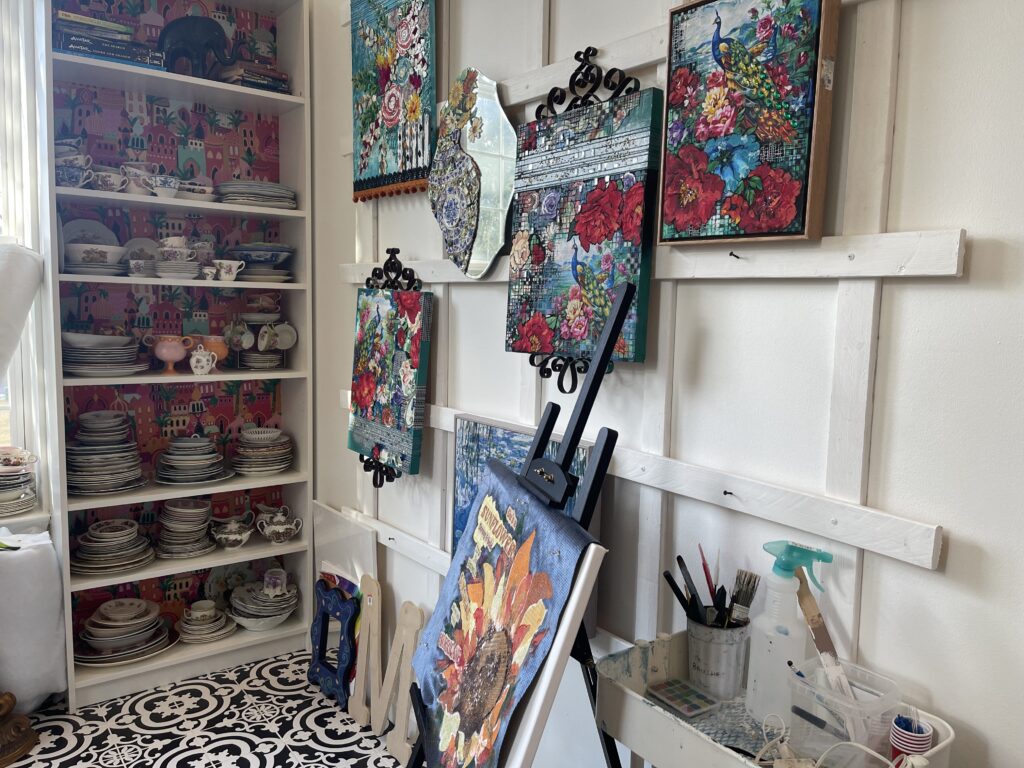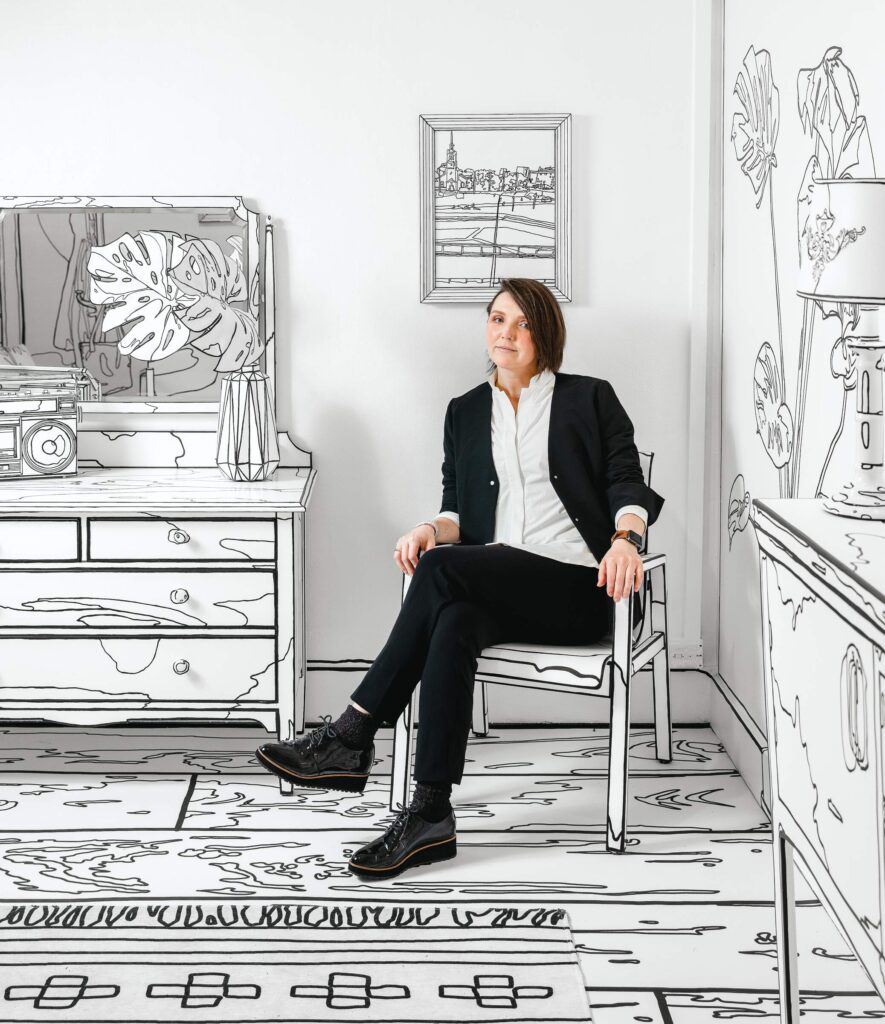
In Studio With Sarah Mecca Abdourahman


Sarah Mecca is a multidisciplinary artist. Her art practice involves painting and video art. As an emerging artist exploring ways to connect with her ethnic identity, she creates figurative imaginings of her community’s history using family archives.

In a studio conversation with the artist Sarah Mecca Abdourahman, she shares a glimpse of a day in her studio, her favorite memory, three of her favorite works, and more. Read on to explore the full interview.
What does a day in the studio look like for you?
A day in the studio can look very different depending on the creative stage I’m in. But it often starts the same, stopping by the store to get some vitamin water and snacks! I also love listening to engaging art-related content in the studio. The next part of my day is looking for interviews with my favourite artists, artist talks, or webinars. A go-to has been the Talk Art podcast. They have an excellent list of artist interviews.
If I’m in the early research stages of my creative process, when planning my painting composition, at my desk, I like to go through my family albums and find images that strike my attention. Then, I’ll play around with them to see if they fit my messaging and composition. I also spend time scrolling on Pinterest. It’s my favourite way to find inspiration! Once that is done, I’ll start my Photoshop collage to plan my painting composition.
If I’ve already completed this stage, I’ll usually go straight to painting once I’ve settled down in my studio. At this stage, I sometimes listen to various music genres to entertain myself. I start with R&B and hip-hop. Once I get bored of that, I listen to K-pop and K-hip-hop. I also love to listen to the Hamilton soundtrack. All these genres help stimulate my brain when painting for long hours. After a few hours of working, I go home and start the same all over again the next day!

What is your favorite memory or incident from your studio?
My favourite memory from my studio is when I first moved in. Because I had an extensive duo exhibition on the way that I had been planning for a couple of years, I was so excited to get started on painting finally. That specific favourite memory is when I made a custom order of 7 feet canvas stretchers for the first time and delivered them to my studio. I was so used to the struggle of having to carry my large canvases across the city, so this felt like a VIP service. I was so happy not to have to do any heavy lifting, and they did a beautiful job building the frame!
Do you have any studio assistants or are you often accompanied by any visitors like pets or kids?
I do not have any studio assistants, and I don’t have visitors that often. But sometimes, I’ll have a collector who’ll drop by before purchasing a painting. I also love arranging studio visits with other artists. Occasionally, I’ll visit their studio, and they’ll come to mine. Seeing their workspace is a fun way to learn about people’s practices.



Can you share three of your favorite works from the past and present?
Three of my favourite works would be “Mundane as My Sheed,” “No Mercy,” and “Airport.” As an emerging artist, I’m still learning about who I am and what my work should look like. Sometimes, I make paintings that I don’t always love visually. However, these are the three that I am the most proud of, and I wouldn’t change a thing.
“Mundane as My Sheed” and “No Mercy” are both from a series of works from my duo exhibition titled “Le dernier des touristes.” It counters preconceived touristic notions of exoticism and danger attached to our cultural and ethnic identities. Taking the standpoint of an “oppositional gaze,” as coined by bell hooks, the Black figures shown in the compositions are neither othered nor marginalized but in power.
“Mundane as My Sheed,” illustrates the value in depicting the mundane and Black ordinary life. Too often, Black representation is rooted in trauma and struggle. I paint scenes of my family simply existing. In this painting, I utilize the Somali Sheed (a long garment women wear at home) to symbolize Black ordinary life.
“No Mercy” addresses the effects of colonial occupation by demonstrating a vibrant and unified Somalia, imagining through my eyes what the past could have resembled or what the future holds. Elements in the background refer to the historical port town of Zeila in the Awdal state of Somaliland. This highlights a moment in history when Somalia was associated with wealth, dating back to the 1st century CE.
“Airport” explores the idea of connecting with my roots. I paint a scene of my family sleeping at the airport on our way to Somalia. I paint my aunt visiting the homeland after many years and my cousin visiting the homeland for the first time. My journey to Somalia was an essential experience as a first-generation Canadian disconnected from my homeland.
How would you describe a dream studio for yourself?
A dream studio would be at least 1000 sqft and have natural lighting. It would have bright overhead white lights, storage for all my large-scale paintings, a kitchen, an office, and a lounge area. That would be the dream for sure!
What does your studio smell of right now?
Oil paint!
If you get a chance to set up your studio anywhere in the world, where would it be?
If I could set up my studio anywhere in the world, it would be in New York!
What are you currently working on?
I’m working on a solo exhibition and joining residencies abroad for the next year and a half to complete the works appearing in my show.



How do you organize your space?
My space is pretty simple. I have a desk, table, and H-frame easel on the side. And all my oil paints in a little box on the floor next to my easel.
Favorite corner in your studio?
My favourite corner in the studio is when I stand next to my window. That’s where I can get the full view of my paintings!

















Comments 17